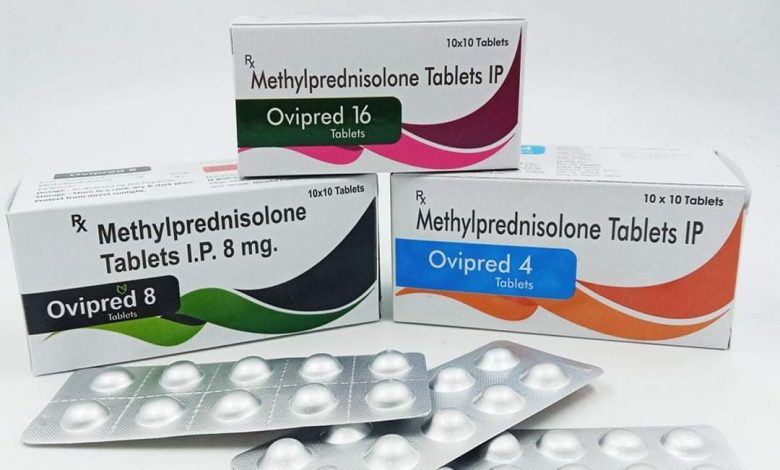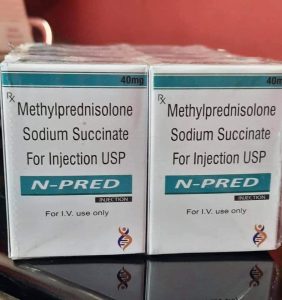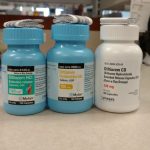How Long Does Methylprednisolone Stay In Your System?

Methylprednisolone is a corticosteroid (cortisone-like medicine or steroid). It works on the immune system to help relieve swelling, redness, itching, and allergic reactions.
Methylprednisolone provides relief for inflamed areas of the body. It is used to treat a number of different conditions, such as inflammation (swelling), severe allergies, adrenal problems, arthritis, asthma, blood or bone marrow problems, eye or vision problems, lupus, skin conditions, kidney problems, ulcerative colitis, and flare-ups of multiple sclerosis.
How should Methylprednisolone be used?
Methylprednisolone comes as a tablet to take by mouth. Your doctor will prescribe a dosing schedule that is best for you. Follow the directions on your prescription label carefully, and ask your doctor or pharmacist to explain any part you do not understand. Take methylprednisolone exactly as directed. Do not take more or less of it or take it more often than prescribed by your doctor.
Do not stop taking methylprednisolone without talking to your doctor. Stopping the drug abruptly can cause loss of appetite, upset stomach, vomiting, drowsiness, confusion, headache, fever, joint and muscle pain, peeling skin, and weight loss. If you take large doses for a long time, your doctor probably will decrease your dose gradually to allow your body to adjust before stopping the drug completely. Watch for these side effects if you are gradually decreasing your dose and after you stop taking the tablets. If these problems occur, call your doctor immediately. You may need to increase your dose of tablets temporarily or start taking them again.

Methylprednisolone also comes as an injection powder to be mixed with liquid to be injected intramuscularly (into a muscle) or intravenously (into a vein). It also comes as a suspension for injection to be injected intramuscularly, intra-articularly (into a joint), or intralesionally (into a lesion). Your personal dosing schedule will depend on your condition and on how you respond to treatment.
You may receive methylprednisolone injection in a hospital or medical facility, or you may be given the medication to use at home. If you will be using methylprednisolone injection at home, your healthcare provider will show you how to inject the medication. Be sure that you understand these directions, and ask your healthcare provider if you have any questions. Ask your healthcare provider what to do if you have any problems using methylprednisolone injection.
Your doctor may change your dose of methylprednisolone injection during your treatment to be sure that you are always using the lowest dose that works for you. Your doctor may also need to change your dose if you experience unusual stress on your body such as surgery, illness, or infection. Tell your doctor if your symptoms improve or get worse or if you get sick or have any changes in your health during your treatment.
How long does Methylprednisolone stay in your system?
There are several factors that come into play when estimating how long Methylprednisolone will stay in your system because every patient has physiology unique to them. Here are some major factors you should consider when trying to understand how long Methylprednisolone will stay in your body:
• Age: Typically, the younger you are, the more efficient your body functions are. The more efficient your body functions, the faster Methylprednisolone will be removed from your system.
• Body height/weight/fat: Your specific prescribed Methylprednisolone dosage corresponds to your body height, weight, and fat. Usually, larger people will be given a higher dosage of Methylprednisolone. The higher the dose of Methylprednisolone you have been taking, the longer Methylprednisolone will take to be removed from your system.
• Genetics: Genes predispose people to different metabolic functions, which is a key factor in how your body processes medications like Methylprednisolone. For this reason, your genetic makeup comes into play when estimating how long Methylprednisolone will remain in your system.
• Kidney and liver functions: The liver and kidneys eliminate everything you ingest, and Methylprednisolone is no exception. If your liver or kidneys are damaged, it will most likely take longer for your body to remove the Methylprednisolone from your system.
• Metabolism: Your metabolism determines how quickly you process foods, liquids, and medications such as Methylprednisolone. If your metabolism is slow, it will take longer for your body to process and eliminate Methylprednisolone from its system than someone with a fast metabolism.
• Usage frequency: The longer you have been taking Methylprednisolone, the longer it will remain in your system. For example, it will take longer for someone who has taken Methylprednisolone for several years to remove Methylprednisolone from the body than someone who has only been taking Methylprednisolone for a few months.
Methylprednisolone has an elimination half-life of approximately 2.5 hours to 3.5 hours. This is the time it takes for the drug levels in your plasma to reduce by half. Studies About 94 to 97% of a drug will have been eliminated after 4 to 5 half-lives. Thus, it follows that after 4 to 5 half-lives, the plasma concentrations of a given drug will be below a clinically relevant concentration and thus will be considered eliminated. This means that Methylprednisolone will clear out of a person’s system within 1 day (approximately 16 hours) after the last dose but the elimination may vary based on multiple factors already stated above.
What are the side effects of Methylprednisolone?
Methylprednisolone may cause side effects. Tell your doctor if any of these symptoms are severe or do not go away:
• upset stomach
• stomach irritation
• vomiting
• headache
• dizziness
• insomnia
• restlessness
• depression
• anxiety
• acne
• increased hair growth
• easy bruising
• irregular or absent menstrual periods
If you experience any of the following symptoms, call your doctor immediately:
• skin rash
• swollen face, lower legs, or ankles
• vision problems
• cold or infection that lasts a long time
• muscle weakness
• black or tarry stool.
If you experience a serious side effect, you or your doctor may send a report to the Food and Drug Administration’s (FDA) MedWatch Adverse Event Reporting program online (http://www.fda.gov/Safety/MedWatch) or by phone (1-800-332-1088).





